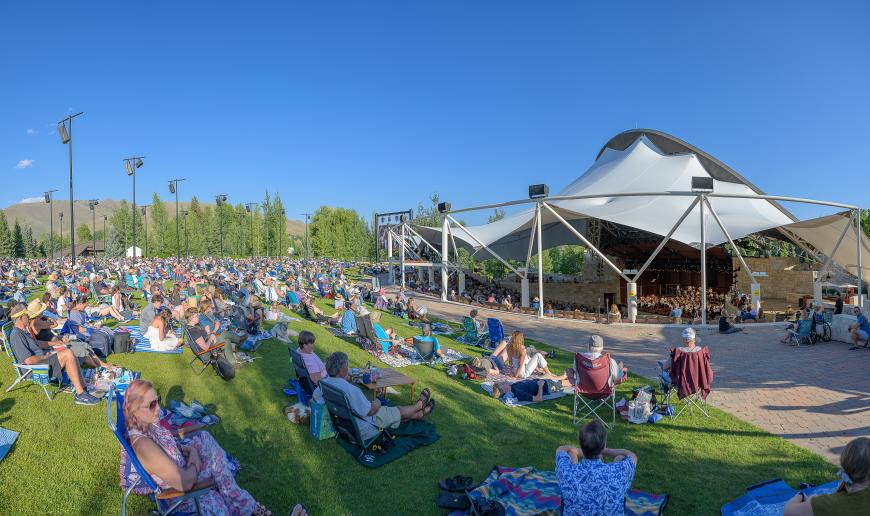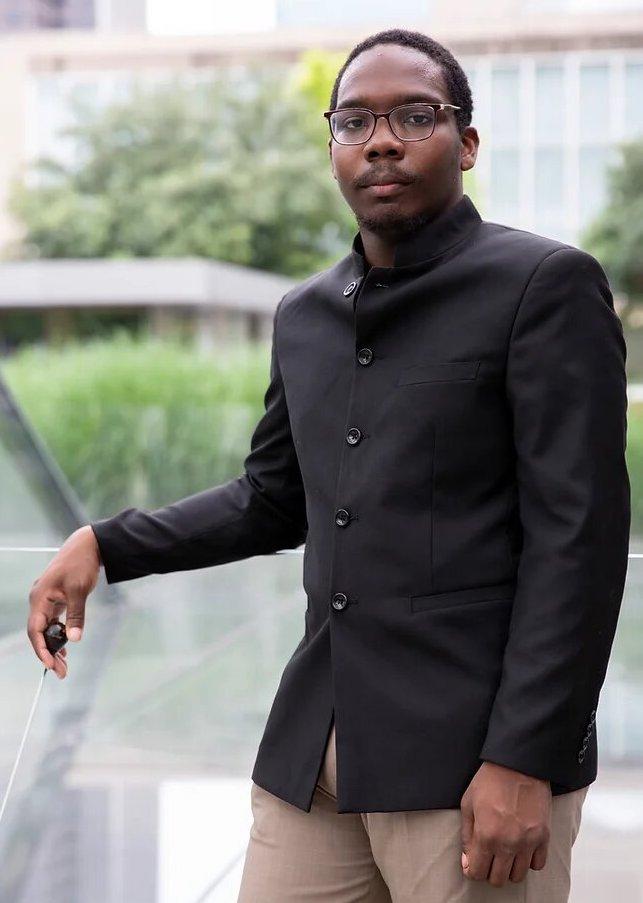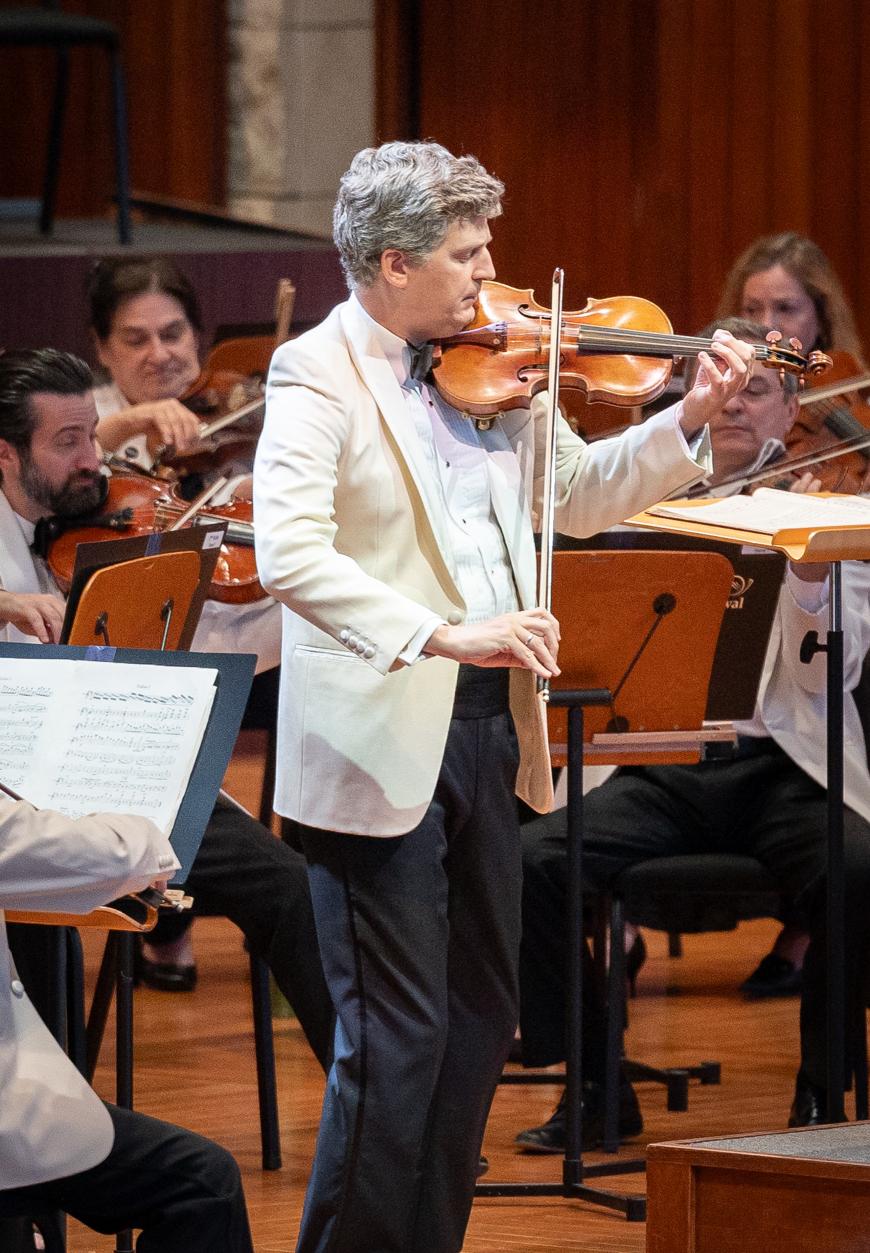
The concert hall was aglow Wednesday night at the Sun Valley Music Festival (SVMF) — and not just because of the sunshine. In the summer festival’s state-of-the-art hilltop pavilion, nestled between the Boulder and Smoky Mountains in Idaho, Music Director Alasdair Neale led the SVMF Orchestra in a double bill of bright American optimism and rich German romanticism.
Now in its 40th season, SVMF seems to have a permanent place in the sun. The venue is situated in a ski resort town, a celebrity haven for nearly a century, with guests and residents from Ernest Hemingway to Marilyn Monroe to Arnold Schwarzenegger.
Four nights of concert attendance revealed an audience — regularly in the thousands and on this night over 2,500 — as ravenous for new American music and Gustav Mahler’s Sixth Symphony as it would be for Beethoven and Brahms. Lawn seats are as serious an affair as the seated pavilion; attendees bring elaborate picnics and enjoy concerts via the gigantic LCD screen and cutting-edge sound. Programs are kept to one hour in early evening — a perfect aperitif — and, except for the gala, are free of charge.

Wednesday’s concert opened with A Joyous Trilogy by Quinn Mason, whose star could be said to be rocketing. The 28-year-old Dallas native is quickly racking up accolades and artistic residencies with orchestras, including the Detroit and Hartford Symphonies. In high school, he was a winner in the American Composers Forum’s 2015 NextNotes High School Music Creator Awards. Mason focuses on symphonic writing, and to date over 100 orchestras have performed his music.
This expertise was immediately apparent within the opening bars of A Joyous Trilogy, which Mason calls a “mini concerto for orchestra” and which employs a full ensemble with a robust percussion section. The first of three attacca movements, “Running,” began with a shimmer of speedskating strings and chattering chimes and flutes. Mason is a percussionist, evident in the pulsing rhythmic motifs and light, nuanced textures that rippled through the orchestra.
The phrases were more pointillistic than linear, yet the sound drove forward with warm, expanding color on a foundation of burnished brass. With its bright, nimble propulsion, the movement was reminiscent of John Adams’s Short Ride in a Fast Machine, if the ride were gentler and on a more human scale.
To introduce the second movement, “Reflection,” the strings tapered to a gentle forest bed laid for a Pines of Rome-like clarinet solo accompanied by woodwind flourishes. A contemplative trombone solo, played standing and with fluid legato by Toronto Symphony principal Gordon Wolfe, wandered through this landscape. The third movement, “Renewal,” began with a soft, energetic shimmer and crescendoed into flight with unabashed lyricism.
In a program note, Mason writes that in A Joyous Trilogy, he aimed to create “an accessible composition designed to put anyone in a good mood.” Despite any simplicity implied, the work was a multilayered journey that reached substantial symphonic depth and range within its 16 minutes.

On to the Brahms Violin Concerto with soloist James Ehnes, who was filling in on short notice for Leonidas Kavakos. (Ehnes is on a run of substitutions for Kavakos, with recital appearances later this month at the Aspen Music Festival and Tanglewood.)
The orchestra played as a single velvety unit in the extended introduction. From the cascading first notes, Ehnes’s performance embodied elegance. His was a Brahms of reverence and sincerity, with a thoughtfully structured narrative and emotional arc; he maintained a focused, centered sound throughout, avoiding overplaying until the very end, when his command of pacing paid off in a declamatory finish. This approach was a welcome contrast to other versions marked by muscle and force.
Ehnes’s sense of proportion guided even the inner workings of the cadenza. He performed the traditional one written by Joseph Joachim, the renowned Hungarian violinist for whom Brahms composed the concerto. Even the aspen trees flanking the pavilion’s travertine walls seemed to cease rustling until the orchestra came back in.
Rochester Philharmonic principal oboe Erik Behr opened the second-movement Adagio expressively, playing this solo that crowns the instrument’s repertoire. Ehnes’s eloquent response to the mini wind serenade, an ornamented version of the oboe’s theme, lofted straight into the air. The rousing, folksy finale lost none of its energy or rhythmic tension for Ehnes’s control.
This concerto is clearly close to his heart. Preconcert, Ehnes shared a memory of his most treasured recording: an LP of the Brahms with Itzhak Perlman, the Chicago Symphony, and Carlo Maria Giulini conducting, which was a Christmas gift from Ehnes’s grandmother. He’d spent weeks listening just to the first movement before flipping the record over.
As an encore, Ehnes performed the Largo from J.S. Bach’s Violin Sonata No. 3, the tender, understated strains dissipating into the cool night.
The monthlong festival continues through Aug. 22.




